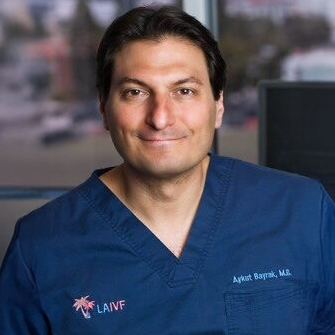
Science sees to it that innovations in every area of medicine are possible everyday by bringing technology to the forefront. As more and more couples postpone parenthood, fertility rates continue declining in this country and around the world. IVF and other fertility treatments help those couples and individuals who, for whatever reason, cannot conceive the “old-fashioned” way and today’s trends and the trends of the future are now fertility’s new normal.
Future Trends in Fertility
Here we look at a few of the ways science and technology come together creating new and innovative ways for couples and individuals to grow their family on their terms.
1. Same Sex Couples Have Options
No two families, like not two pregnancies, are alike. But everyone who desires a family deserves to share their love with their child.
Fertility doctors see members of the LGBTQ+ community more often these days than ever before. The possibility of growing your family biologically is becoming more popular. Of course, same-sex couples need help when it comes to pregnancy. Fertility clinics answer those needs in many ways. Intrauterine insemination (IUI), in vitro fertilization (IVF), egg or sperm donation, gestational carrier and even donated embryos help couples who are members of the LGBTQ+ community.
Same-sex female couples may consider using donated sperm for IUI or IVF or a friend or family member may offer his sperm. A lesbian couple may choose reciprocal IVF in which one partner uses her egg and the other partner carries the pregnancy. Should there be any fertility issues with either partner your doctor can help resolve those issues.
There are options for same-sex male couples as well. Using anonymous donor eggs or eggs donated by a friend or family member and the sperm of one or both partners (this would eliminate using a family member!) to fertilize the egg via IVF offers the best option for a same-sex male couple who want a child of their own. A gestational carrier is necessary to carry the pregnancy and there are certain legal aspects which differ state to state. However, this offers the couple a chance for a child who is biologically connected.
2. Genetic Testing
Preimplantation genetic testing (PGT) enables those couples and individuals who have a family history of chromosomal and genetic disorders to have a child free of those risks. However, this type of testing is available only to those undergoing a cycle of IVF. About five days after fertilization the embryo is at the blastocyst stage. An embryologist safely removes a few cells from the pre-placenta and tests them for chromosomal abnormalities or genetic disorders. Once you and your doctor receive the results, you decide on the healthiest embryos for implantation.
3. Fertility Preservation
Life is busy. Establishing a career, finding a partner or whatever the reason many couples postpone starting a family until the time feels right. Once the time arrives to try to conceive, they meet with some difficulty. A woman is born with all the eggs she will ever have. As she ages so do her eggs and as they age, they become less viable. In order to ensure healthy eggs and improve the odds for a successful pregnancy outcome cryopreservation of the eggs is a wonderful option.
Also known as freezing, cryopreservation is useful for preserving sperm as well. If your IVF cycle produces an abundance of viable embryos cryopreservation helps preserve those embryos for later use, or you may choose to donate them.
For those who undergo treatment for a disease or cancer which compromises their fertility cryopreservation helps preserve the opportunity to have a family own the future. While cryopreservation is not new, it is fast becoming an excellent option for young women who aren’t at the point of growing their family just yet.
4. Laser Assisted Hatching
For some couples and individuals who use embryos previously frozen or who have experienced failed IVF due to implantation failure assisted laser hatching helps improve their odds. There is a membrane surrounding the fertilized egg as it develops into the early embryo stage.
Once the physician implants the embryo it breaks through the membrane and attaches to the lining of the uterus where it continues growing until birth. In some cases, previously frozen embryos or those embryos from the eggs of mothers over 35, for example, the membrane proves impenetrable and the embryo can’t implant.
Assisted laser hatching uses a laser device to create a hole in the membrane making it much easier for the embryo to hatch and attach. Previously doctors created a weak spot in the membrane using physical pressure. The laser poses less risk to the embryo and since it is much faster the embryo(s) spend less time out of their incubator.
Let Us Introduce You to Your Future
The future is now. If you are struggling with your fertility or you just want some ideas on how you and your partner can plan for your family contact our office today. Our professional experts combine compassion and caring with cutting edge innovation so we can help you grow your family. Contact LA IVF today and together let us plan for your future.










